Transcending oil
Hawaiʻi is heading towards 100% clean energy.
But until we get there,
we spend over a billion dollars per year on foreign oil.
Hawaiʻi’s path to a clean energy economy
Chapter 1Our Reliance on Oil
Chapter 2What’s Changed since 2008
Chapter 3Reaching 80% Clean Energy by 2030
Chapter 4Community Support
Electricity is Expensive
Hawaiʻi has the highest electricity rates in the U.S. Residents’ electricity bills are closely tied to the price of oil and are therefore also less predictable than any other state in the U.S. Among those living on minimum wage, the costs can amount to a substantial part of one’s paycheck.
Calculate how high
electricity costs affect you
I make $ an hour
and work hours per day
in County.
Oil Dependence
For decades, nearly every dollar spent on the fuel that powered Hawaiʻi’s electrical and transportation grid was sent out of the state rather than spent in the local economy. On average, households spent more than $825 per year on oil to power their homes in 2014. As a state, we spent at least $1.3 billion on foreign oil. This reliance on oil is costing both the islands and you—it is a strain on our resources and our wallets.
Accelerating Change
New data shows that the faster we transcend oil, the more money we save and the more jobs we create. Hawaiʻi can achieve up to 84% clean energy and generate 3,500 additional well-paying jobs by 2030. This means that our generation can take advantage of this opportunity.
First, let’s understand the challenges ahead.
Every day, oil tankers come to our ports. All that foreign oil adds up to over a billion dollars that leaves our local economy each year. For decades, our electricity has been almost exclusively dependent on imported oil.
In order to turn oil into a usable fuel source for our homes, offices, cars, and buses, we built refineries that release toxic pollutants into the air we breathe and emit millions of metric tons of CO2 into the atmosphere, contributing to climate change.
Hawaiʻi’s first oil power plant opened in 1920, and we have continued to invest in infrastructure that supports oil production to serve our energy needs.
Your electricity bill
closely tracks the price of oil.
When oil prices increase, so does Hawaiʻi’s electric bill.
Average Monthly Bill
Dollars
Price of Oil
Dollars per million BTU
Source: State of HI - Data Book Time Series, US Energy Information Association
When our utility companies buy oil, that cost is passed down to us, in our homes, businesses, schools, and even water use. While today’s oil prices are at a 20-year low, it will only take one crisis to raise our bills and undermine our resilience as a community. It already happened in 2008.
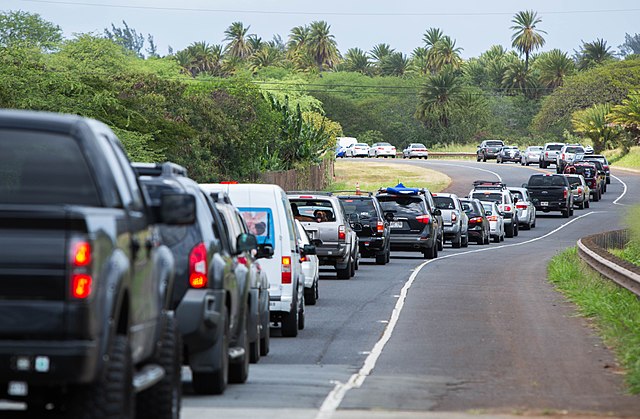
Traffic on the North Shore of Oʻahu Source:Anthony Quintano
Transportation is our greatest opportunity.
Oil doesn’t just fuel our homes. It powers our cars, trucks, and airplanes. In fact, we now use more oil to drive than for electricity. While cars have become more efficient overall, we choose to buy less efficient cars — and we are buying more of them and driving them longer distances.
Growth in Total Miles Traveled since 1990
% Change in Total Miles Driven
Source: State of Hawai‘i
As our population grew and housing got more expensive, we moved to less expensive parts of the island to raise our families. And while our houses were larger and more affordable, our neighborhoods were far from jobs and schools. Instead of walking to work, or taking the bus, we drove. In order to afford a home, we put our paychecks into our cars and parking and spent our time sitting in traffic instead of spending time with our friends and families. The more time we spend commuting in inefficient, oil-powered cars, the more oil we need to sustain all that driving.
In 2008, we set a renewable
energy goal of 40% by 2030.
At the time, 6% of Hawaiʻi’s electricity came from renewable sources, with little change since 1990. Our economy was burdened by record high oil prices and consequently record high electricity rates. Not since the late 1970s had our dependence on imported oil been so pronounced.
Electricity use from Renewable Sources
But then the cost of renewable
energy began to plummet.
Wind
Solar Plants
Rooftop Solar
Oil
Once prohibitively expensive, solar is now cheaper than oil. After decades of building almost nothing but oil-fired plants, we began adding renewable energy to the electricity grid. The first wind projects began in 2006 on Hawaiʻi Island and Maui.
We’ve added 318 megawatts of renewable energy
since 2010, more than all previous years combined (276 megawatts pre-2010).
Community projects
led to change too.
Outside of utility companies, there are nearly 40 smaller-scale projects from the local community and another 30 that are proposed or in development.
These include new and innovative technologies that have helped accelerate our path away from foreign oil. Examples include:
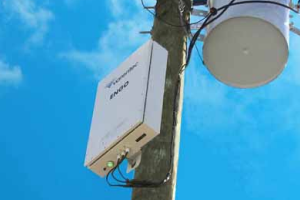
Varentec
Varentec deployed 95 of their ENGO units, a device that controls voltage variances at the neighborhood level. The goal of this project is to increase bandwidth for more solar PV to be installed in overly saturated circuits.
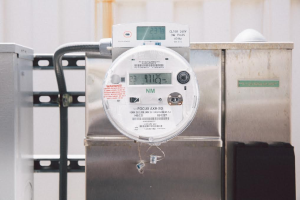
ConnectDER
ConnectDER's residential meter collar is being used on 40 Molokai homes to enable queued solar customers to receive faster approval for their PV systems. The ConnectDER device allows customers and the utility to avoid thousands of dollars in improvement costs.
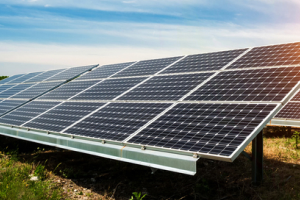
Kevala
Kevala’s “Google Maps for the grid” models and visualizes Oahu’s utility infrastructure.. This public tool was developed in collaboration with local energy stakeholders and national experts in order to inform policy and prioritize development opportunities.
Individuals have contributed too. Nearly 1 in 3 single-family homes in Hawaiʻi have rooftop solar panels, and rooftop solar now makes up the single largest source of renewable energy generation in Hawaiʻi (about 10% of electricity sales in 2017). In the middle of the day it can be our largest power plant.
Transportation changes also reduced our dependence on oil. O‘ahu expanded its network of protected bicycle lanes and proposed The Honolulu Rail Transit Project will further cut back our use of fossil fuels.
1
Oil tankers near Hawai‘i’s ports
Rooftop Solar Panel Installation
Hart Line
Biki Stops
Bicycle Routes
1
Solar
1
Wind
1
Geothermal
1
Hydro
1
Technology
1
Other
Oil Tanker
*2014 - 2017 avg.
$141M* leaving Hawai‘i, monthly, for foreign oil
Jan 1 2014 12AM
For the past decade, we’ve moved a large portion of energy creation to the islands’ resources.
Percent of Electricity from Renewable Sources
The shift to clean energy has had an impact on our economy. Not only is more money staying in Hawaiʻi, we now have twice as many people working in the clean energy sector versus conventional energy. Jobs in rooftop solar installation, energy efficiency, and renewable fuel production totaled over 15,000 in 2016, paying an average of $3 to $7/hour higher than the state’s median wage.
In 2015, Hawaiʻi became the first state in the U.S. to pass a law requiring that 100% of our energy is renewable. While we’re on our way to reaching our goal, we’re not there yet. Let’s take a look at the possible roads that lead to 100%.
How Hawaiʻi Generates Electricity from Renewable Sources
Filter County:
Filter Path:
Our current mandate requires us to achieve 100% renewable energy by 2045.
When will we reach 100% renewable energy, based on current law?
Take a guess at what you think our path is.
Great guess! Hawaiʻi’s current renewable energy goals are 40% by 2030, 70% by 2040, and 100% by 2045. But new analysis shows we save money if we go faster.
Taking these policies and upcoming renewable energy projects into account, here is one possible path to our goals.
The faster we reach our goal, the more money stays in Hawaiʻi.
Let’s explore the most cost-effective paths. Since the future price of oil and renewable energy are uncertain, a range of outcomes were modeled for years to come. Based on new analysis called Transcending Oil: Hawai‘i’s Pathway to a Clean Energy Economy, from Rhodium Group, found that if oil prices remain low and the cost of renewables declines only modestly, the cheapest pathway would achieve 58% renewable energy by 2030—higher than our current goal of 40%. They also found that if oil prices rise and the cost of renewables declines more rapidly, we could achieve 84% renewable energy by 2030 and save the state up to $7 billion dollars.
Savings of Cost-Effective Path
Each island has enough renewable energy to meet demand.
Even based on conservative assumptions, we have everything we need for either path right here.
The State’s Annual Renewable Energy Sources vs. Demand
Filter County:
The analysis from Rhodium Group found the amount of electricity we need in 2045 will be about the same as what we consume today. Each island can support its own needs.
The utility and government can’t do it all alone. To accelerate the clean energy transition, we need to work with the community to remove artificial barriers— each type of renewable energy project has its unique challenges.
By investing in renewable energy options throughout the islands, Hawaiʻi can once again become a model for living well and independently of outside fuel sources.
It’s important that everyone has a voice as we transition to locally powered clean energy. Unlike oil, which is extracted away from Hawaiʻi, we will unearth the clean energy potential, like solar and wind, on most of our islands.
Share your thoughts: which projects do you support and find effective?
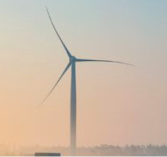
Onshore Wind
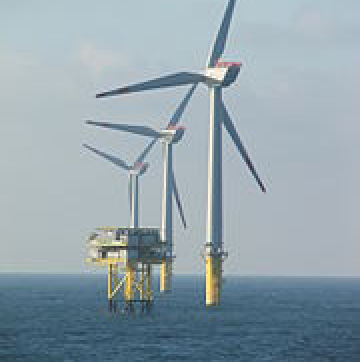
Offshore Wind
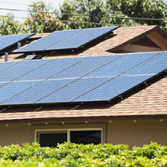
Rooftop Solar
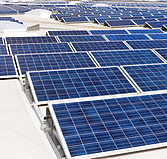
Solar Plants
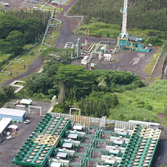
Geothermal
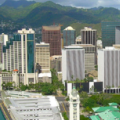
Update Building Codes

Bike Network
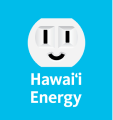
Energy Efficiency
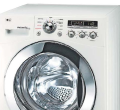
Demand Response

Expand Bike Share

Electric Buses
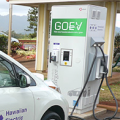
Electric Vehicle Charging at Work
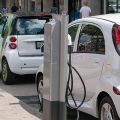
Electric Vehicle Sales Mandates

Complete Streets
What Ranked Highest
According to you and your community members, the below proposals are considered the most helpful and have the most overall support.
To support these efforts in your community, you can write your legislator to explain why clean energy and mobility solutions are important to you. Whether it’s a story about how these issues have impacted your life or you want to advocate for innovative technology in your community, it’s important for you to guide our transformation and energy choices. If we don’t identify the path that’s right for our community, the choices could be made without us.
Find your local legislator and city council members using the links below.